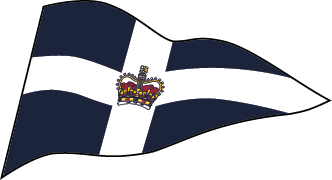General Committee is conscious of our role in promoting yacht racing, as well as the safety protocols associated with it. As a General Committee member and sailor I am passionate about the need to be safe while enjoying this great sport. As a joint owner of Another Chapter, competing in both club racing and ocean racing, I wanted to share our safety protocols.
On “Another Chapter” (Beneteau First 44.7) we have our safety policy attached to a prominent bulkhead that reads as follows:
WE AS CREW RECOGNISE THAT THE SPORT OF SAILING IS POTENTIALLY DANGEROUS AND AS A RESULT WE USE VARIOUS SYSTEMS TO MINIMISE THE RISK AND INJURY TO THOSE INVOLVED. ALL CREW MUST PARTICIPATE IN SAFETY RELATED MATTERS AS REQUIRED
SYSTEMS INCLUDE:
CREW SAFETY INDUCTIONS
APPROPRIATE SAFETY EQUIPMENT
WRITTENS SOPS (safe operating procedures)
ONGOING TRAINING AND RISK ASSESSMENT
OPEN, TWO WAY COMMUNICATION
All keelboats are used in different ways by different owners.
It is understandable therefore that individual boats’ safety systems get tailored accordingly.
Another Chapter is Cat 2 certified for offshore racing so our systems are quite involved and extensive.
Rather than explain ours in detail, I feel it more useful to talk about what I see as the “important” aspects of what we do and also some of the things we don’t do.
Please contact me if you want more in-depth detail of our set up
RISK ASSESSMENT
If an identified risk can’t be eliminated; what is the likelihood of it occurring AND what can be the consequences if the situation isn’t handled correctly? For LIKELIHOOD we have low, moderate and high and CONSEQUENCES we have minor, significant and catastrophic .
Considering specific risks along these lines soon focuses ones attention on priorities such as MOB, FIRE/LPG, MEDICAL EMERGENCY etc…
But what about a keel or rudder falling off!!! – highly highly unlikely but absolutely catastrophic !!!!
So we might want to consider it, including survey in the case of significant grounding and annual checking for keel matrix de-lamination, rudder system integrity etc..
INDUCTIONS
All our regular crew are familiar with our Safe Operating Procedures (SOPs) for different operational situations, also our safety equipment, its stowage location and how it is used.
But what about that friend who has never sailed before and is keen to come out for a twilight race AND it’s blowing 20 knots – what could possibly go wrong ……?
We have 3 levels of documented induction (Day Guests, Bay crew and Offshore crew) covering critical issues that need to be understood. The process of induction is simple and quick and often results in important questions, answers and understanding.
Everyone understands the role of skipper – but does everyone know who the 2IC is in the event of the skipper being incapacitated?
MAINTENANCE
It is no surprise that things on boats break, seize up, stop working etc…
A simple maintenance schedule which is documented and recorded minimises the chance of things failing – many of which can have significant “knock on” safety implications.
ANNUAL CREW TRAINING SESSION
It’s all very well to have extensive documented procedures but they have minimal value unless they are regularly tested and challenged.
At the start of each season we conduct an on-water safety session where we run various practical scenarios including MOB using the wet and heavy club Duncan (luckily he doesn’t complain).
Also we test our emergency steering, Mayday abandon ship, Fire, Full storm reef downs etc..
Most importantly at the end of the session we have a review of what went well, what didn’t and any suggested improvements – all of which gets recorded in the ship’s log book and actioned as needed.
MEDICAL SITUATIONS
These will happen and shouldn’t be underestimated.
We have a couple of crew with first aid certificates (Cat2 mandatory requirement).
Your medical kit should be appropriately stocked as per audit level requirements.
Sea sickness and associated dehydration can become a critical issue.
Gastro on a boat offshore is not pretty – hand and food hygiene is essential.
With the cost of defibrillators reducing (and none of us getting younger) it might be worth considering an investment.
SEA SURVIVAL COURSE
If you ever intend sailing offshore all I can say is “highly highly recommended !!!” .
You won’t be disappointed ;)- and it’s fun !!
CHECKLISTS and PROCEDURES
We have several simple comprehensive check lists that are easily delegated to different crew (de-facto training) to action as and when needed. One of our important ones is our “Offshore list” which includes all the things to inspect and check before we head out, some of the things on this list are easily forgotten including items that need to be inspected/tested and are out of sight.
Procedures should probably be re-named “guidelines” as ultimately every scenario that the skipper/crew/boat faces will be different each and every time. They serve mainly as a basis for understanding but are flexible in their interpretation so we don’t always follow them. Importantly, they can and should be disregarded as and when the skipper sees fit depending on the unique situation being faced.
AUDITS
There are various levels of independent Audit certification with requirements tailored to the conditions that the boat is intended to race in. At RBYC our club audit requirements are best explained by our Boating Manager; Colin Burgess below:
Signing off
Neil Sargeant
GENERAL COMMITTEE

